Design decisions for buildings and communities are critical to efforts to increase local and regional resiliency. Building designers — of residential, institutional, and commercial structures — should strive to incorporate passive and active survivability concepts into new and renovated structures.
Community planners and developers need to incorporate concepts that increase the capacity to maintain transportation flow, strategies to handle water management, and infrastructure approaches that will withstand a variety of risks.
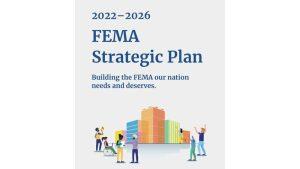
2022-2026 FEMA Strategic Plan
The landscape and scope of emergency management is changing quickly. Ten years ago, FEMA managed an average of 108 disasters a year. Today they manage an average of 311 disasters plus the ongoing response to the COVID-19 pandemic. In December 2021, FEMA released their 2022-2026 Strategic Plan that addresses these changes.
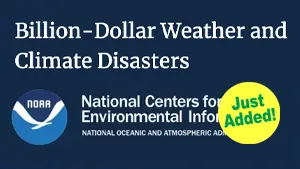
Billion-Dollar Weather and Climate Disasters
The National Centers for Environmental Information’s (NCEI) Billion-Dollar Disasters product is intended to show the impact of extreme weather and climate events on the economy in inflation-adjusted dollars.
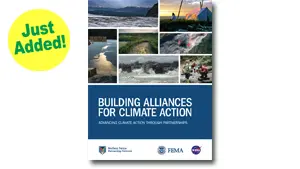
Building Alliances for Climate Action
FEMA’s Building Alliances for Climate Action is a guide that provides resources, insights, and stories to help people and organizations address climate change.

Climate Adaptation Planning: Guidance for Emergency Managers
FEMA’s Climate Adaption Planning: Guidance for Emergency Managers is intended to help state, local, tribal, and territorial (SLTT) emergency managers incorporate climate adaptation into emergency management planning efforts.
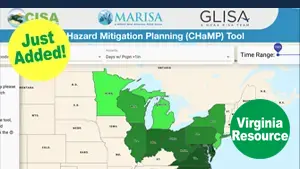
Climate and Hazard Mitigation Planning (CHaMP) Tool
CHaMP provides users with a single point of access to county-, state- and region-specific historical climate and hazard data and projected climate information.
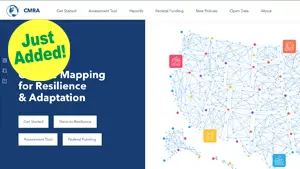
Climate Mapping for Resilience and Adaptation
The U.S. Climate Resilience Toolkit offers a framework to help communities systematically consider and address their climate hazards.
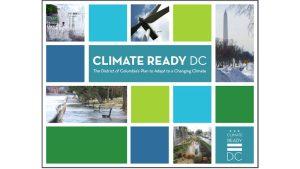
Climate Ready DC: The District of Columbia’s Plan to Adapt to a Changing Climate
Climate Ready DC is the District of Columbia’s strategy to make the District more resilient to future climate change while helping to ensure that our city continues to grow greener, healthier, and more livable.
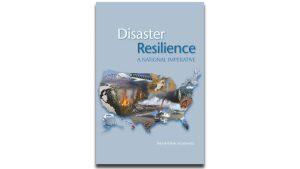
Disaster Resilience: A National Imperative
Disaster Resilience: A National Imperative addresses the broad issue of increasing the nation’s resilience to disasters. This book defines “national resilience”, describes the state of knowledge about resilience to hazards and disasters, and frames the main issues related to increasing resilience in the United States. It also provide goals, baseline conditions, or performance metrics for national resilience and outlines additional information, data, gaps, and/or obstacles that need to be addressed to increase the nation’s resilience to disasters. Additionally, the book’s authoring committee makes recommendations about the necessary approaches to elevate national resilience to disasters in the United States.
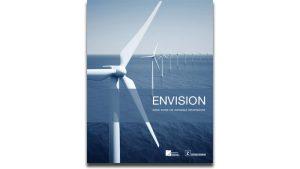
Envision Rating System for Sustainable Infrastructure
Published in 2015, the Envision system is composed of tools, covering all aspects of a product’s lifecycle, that are meant to introduce sustainability into infrastructure projects.

EPA: Flood Resilience Checklist
Is your community prepared for a possible flood? Use EPA’s Flood Resilience checklist to improve your community’s flood resilience.

2022-2026 FEMA Strategic Plan
The landscape and scope of emergency management is changing quickly. Ten years ago, FEMA managed an average of 108 disasters a year. Today they manage an average of 311 disasters plus the ongoing response to the COVID-19 pandemic. In December 2021, FEMA released their 2022-2026 Strategic Plan that addresses these changes.

Billion-Dollar Weather and Climate Disasters
The National Centers for Environmental Information’s (NCEI) Billion-Dollar Disasters product is intended to show the impact of extreme weather and climate events on the economy in inflation-adjusted dollars.

Building Alliances for Climate Action
FEMA’s Building Alliances for Climate Action is a guide that provides resources, insights, and stories to help people and organizations address climate change.

Climate Adaptation Planning: Guidance for Emergency Managers
FEMA’s Climate Adaption Planning: Guidance for Emergency Managers is intended to help state, local, tribal, and territorial (SLTT) emergency managers incorporate climate adaptation into emergency management planning efforts.

Climate and Hazard Mitigation Planning (CHaMP) Tool
CHaMP provides users with a single point of access to county-, state- and region-specific historical climate and hazard data and projected climate information.

Climate Mapping for Resilience and Adaptation
The U.S. Climate Resilience Toolkit offers a framework to help communities systematically consider and address their climate hazards.

Climate Ready DC: The District of Columbia’s Plan to Adapt to a Changing Climate
Climate Ready DC is the District of Columbia’s strategy to make the District more resilient to future climate change while helping to ensure that our city continues to grow greener, healthier, and more livable.

Disaster Resilience: A National Imperative
Disaster Resilience: A National Imperative addresses the broad issue of increasing the nation’s resilience to disasters. This book defines “national resilience”, describes the state of knowledge about resilience to hazards and disasters, and frames the main issues related to increasing resilience in the United States. It also provide goals, baseline conditions, or performance metrics for national resilience and outlines additional information, data, gaps, and/or obstacles that need to be addressed to increase the nation’s resilience to disasters. Additionally, the book’s authoring committee makes recommendations about the necessary approaches to elevate national resilience to disasters in the United States.

Envision Rating System for Sustainable Infrastructure
Published in 2015, the Envision system is composed of tools, covering all aspects of a product’s lifecycle, that are meant to introduce sustainability into infrastructure projects.

EPA: Flood Resilience Checklist
Is your community prepared for a possible flood? Use EPA’s Flood Resilience checklist to improve your community’s flood resilience.
